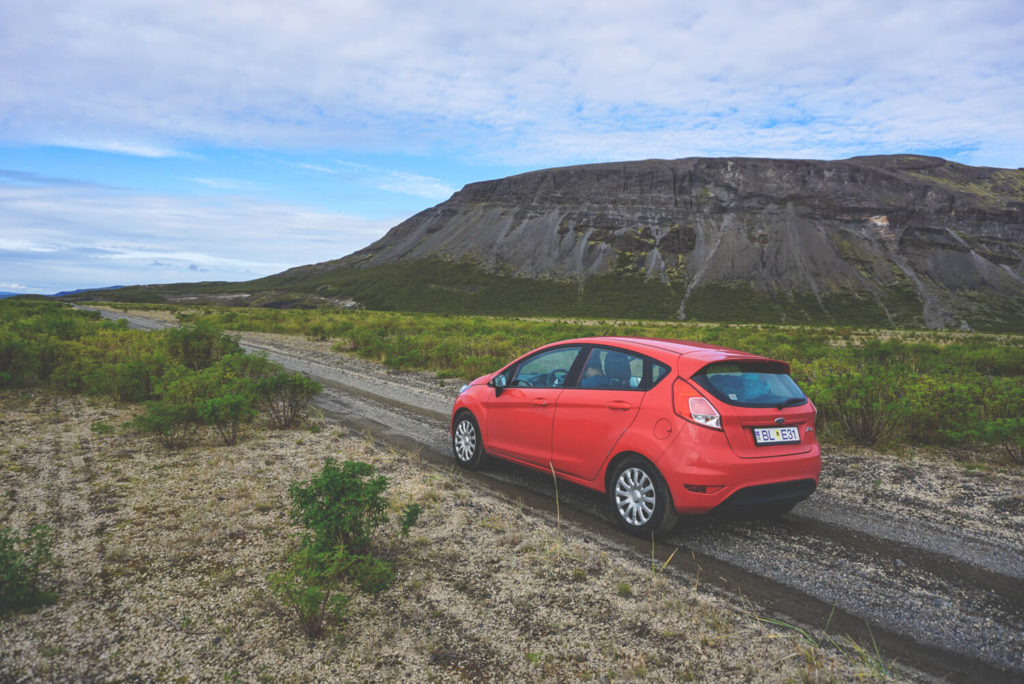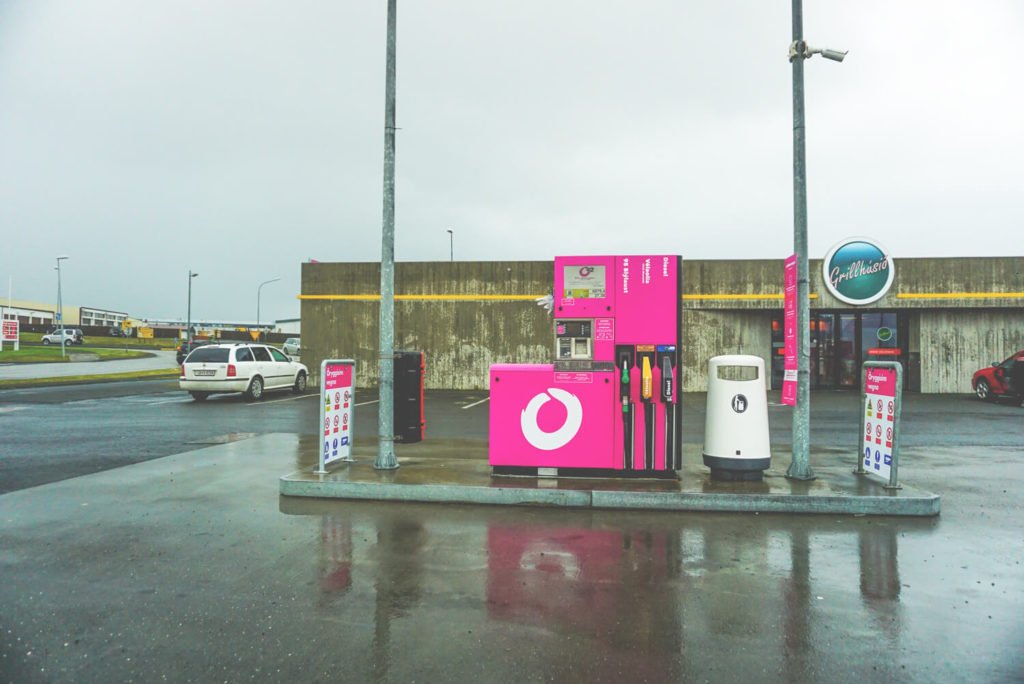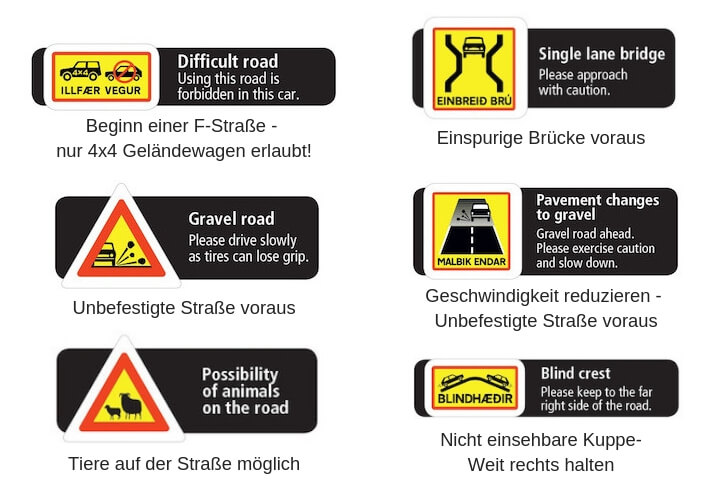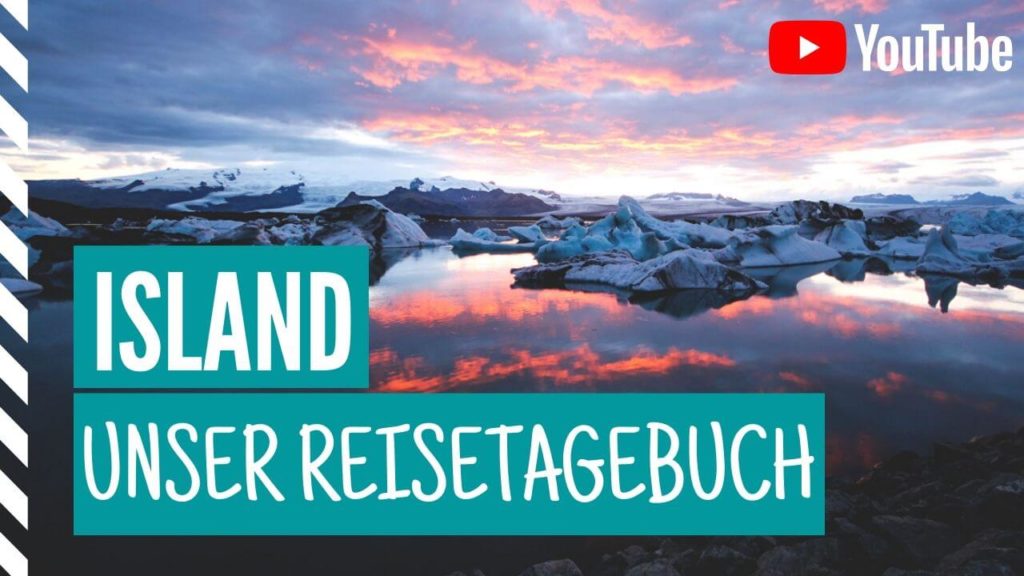Our tour through Iceland was a complete success. We were very lucky with the weather, so there were no problems with our rental car either. We’ve summarized all the points about rental cars and driving in Iceland here for you. Getting off the bus, taking a quick photo, and then immediately moving on isn’t your thing? Then you should definitely organize a rental car for Iceland.
We were a bit nervous before our trip because we couldn’t predict the weather or road conditions. But we can reassure you, it’s not as “bad” as you often hear, especially if you follow a few simple rules. If you still have any questions after reading this post, please feel free to ask us in the comments.
Other important Iceland topics:
- Preparation & Tips
- Camping & Camping in Iceland
- Iceland’s Sights
- Currency in Iceland
- Best time to travel to Iceland
- Routes for 7 and 14 days
- Costs for our trip
- Our Iceland country page
- The South of Iceland
- The Vatnsnes Peninsula
- The North of Iceland
- The East of Iceland
- The Westman Islands
- The Southeast of Iceland
- Reykjavik Highlights & Tips
- The Golden Circle
Renting a Car in Iceland
Unfortunately, renting a car in Iceland isn’t quite as cheap. To find the cheapest price, we use Billiger-Mietwagen* or MietwagenCheck*. Here, after entering your desired data, you’ll receive a list of all the cars and prices. You should definitely not forego an insurance package. And: Read the fine print! We always book fully comprehensive insurance with no excess, as well as glass, tire, and underbody protection (no need for a navigation system). We didn’t purchase ash and sandstorm insurance (€15–€20 extra per day). Volcanic ash and strong sandstorms can wear away car paint. The car can even tip over in strong winds. Ultimately, however, it’s up to you to decide which type of insurance you choose for your car. You can always be lucky or unlucky with the weather. One moment the sun is shining, the next it can be raining heavily and become very windy. Iceland’s weather is and always will be unpredictable. Some roads away from the Ring Road are also quite bumpy. You should also keep in mind that you will most likely cover several hundred to thousands of kilometers on Iceland’s roads. For this reason alone, a reasonable insurance package is important.

During the winter months, you should probably travel in Iceland with an SUV (don’t forget snow chains and winter tires). It often happens that roads are closed and you have to take a detour. If these detours involve gravel roads, you’ll certainly be glad you’re not in a small car. Unfortunately, we have no experience with an SUV or with the Icelandic winter. It’s best to get reviews from previous Iceland travelers. A very good Facebook group is this one: Traveling in Iceland. By the way: Your German driver’s license is sufficient in Iceland.
Small car or off-road vehicle?
In Iceland, a general distinction is made between “conventional” cars and 4×4 off-road vehicles. Generally, you can explore the island very comfortably even in a small car (if the weather isn’t too harsh). We also traveled in a small Ford Fiesta and experienced an incredible number of magnificent highlights. These cars are perfectly adequate for the Ring Road and short excursions into the wilderness. At first, we were skeptical whether a small car would be sufficient. However, we even received a free upgrade to a slightly larger car. But even in a small car, we and our three large backpacks would have had enough space.
No matter whether it’s a small car, a mid-size car, or a station wagon, you are not allowed to drive on the so-called F-roads with these cars. But it’s not as if a main road suddenly becomes an F-road. The ring road with its classic sights can be easily reached without an off-road vehicle. The highlands and smaller parts near the coast are off-limits without a 4×4.
TIP: If you’re traveling with more than two people, it’s best to book a slightly larger car. In Iceland, you usually bring a bit more gear than, for example, for a vacation in Mallorca. With 3 or even 4 people, a small car is definitely too small.
What about F-roads?
The “F” designation is given to particularly bumpy roads and roads leading into the highlands. Accordingly, a 4×4 all-terrain vehicle is mandatory for these routes! (Some SUVs aren’t sufficient!). Often, small rivers must be crossed or steep inclines must be overcome on these routes. This is absolutely unthinkable without an off-road vehicle. We strongly recommend that you adhere to these rules. Highland roads are often only open from June to September.

Some people still drive a conventional car on these roads, get stuck, and/or are stuck. This is not only annoying and wastes time, but also results in hefty fines. Your insurance coverage will be voided on F-roads, at the very latest. So, you are ultimately liable for any damage caused. You can find a good overview of F-roads here: Vegasjá. If you want to learn more about the condition of F-roads, check this website: www.road.is.
Special rules for driving in Iceland
In Iceland, weather and visibility conditions can change quickly. Therefore, it is mandatory to turn on your lights. No matter what time of day or year, always drive with your lights on! Be sure to observe the speed limit! Fines for exceeding the speed limit are much higher than in Germany. For example, 10 km/h over the limit costs around €70. Unless otherwise stated, the speed limit is 50 km/h in cities, 80 on gravel roads, and 90 on country roads. Speed checks are conducted.
Beware of tourists! No, this is not a joke. Some drivers actually stop in the middle of the road to take a quick photo. You should also expect drivers who suddenly decide to pull over to the right (even though there’s no room) or turn. Therefore, it’s essential to maintain a sufficient safety distance and, of course, don’t just stop yourself.
It’s not uncommon for the road to narrow to one side. But don’t worry, this will be announced beforehand with a sign (more on that later). The rule here is: whoever comes first goes first. Therefore, you should approach with foresight and check whether the way is clear or whether someone is already driving on the narrowed road. Please don’t roll up at a snail’s pace for 200 meters and wait until there are no oncoming cars in sight. It’s absolutely sufficient to slow down, drive to the narrowing, and continue accordingly, or stop on the right.
In tunnels, one direction of travel always has the right of way. Simply pay attention to the relevant signs before entering the tunnel. Laying-out bays are available for the other direction of travel. Whenever priority traffic appears, oncoming cars drive into the bays and make their way to the end of the tunnel. So, be sure to check beforehand whether your lane has priority or whether you have to give way.

While the famous Icelandic horses stay obediently in their paddocks, the sheep often manage to escape. Most of the time, the sheep graze peacefully on the side of the road. However, there are also sheep that decide at short notice to cross the road and run across the road. Sheep don’t like to be separated from their companions, so be prepared for individual sheep that want to quickly return to their group. Always keep an eye on the side of the road. As long as the sheep are grazing, everything’s fine. However, if they look around or even walk near the road, drive carefully!
Fueling in Iceland
We mostly filled up at the “Orkan” gas stations in Iceland. The prices were simply unbeatable compared to other gas stations. Currently, a liter of gasoline costs around €1.70 (219 ISK). At other gas stations, it was often €1.83 (233 ISK). So it’s worth comparing prices. You can find an overview of all gas stations here: Gas stations in Iceland.

Filling up in Iceland is a little different than in Germany. In Iceland, you pay first and then fill up. You only really deal with fuel dispensers. These can often be switched to German. The process is as follows:
- Insert your credit card and immediately remove it again
- Select how many kroner you want to fill up for
- Alternatively, select “Fill up” (= fill up)
- Now enter your card PIN (4 digits only)
- If necessary, Dial the pump number.
- Now you can fill up.
- Print your receipt if desired.
- Done! Now you can move on!
Special Traffic Signs
In Iceland, you’ll also encounter traffic signs that we don’t necessarily know in Germany. We’ve picked out a few relevant ones:

If you follow these tips and the rules, you have nothing to fear in Iceland (except the unpredictable weather). Do you have any questions or further information? Then post them in the comments! Otherwise, we wish you a pleasant and safe journey in Iceland!
Our travel diary on YouTube
